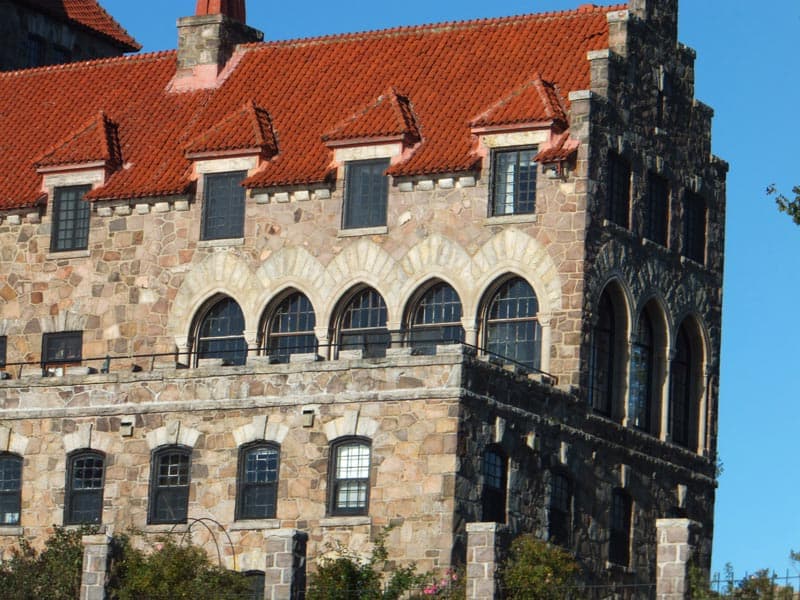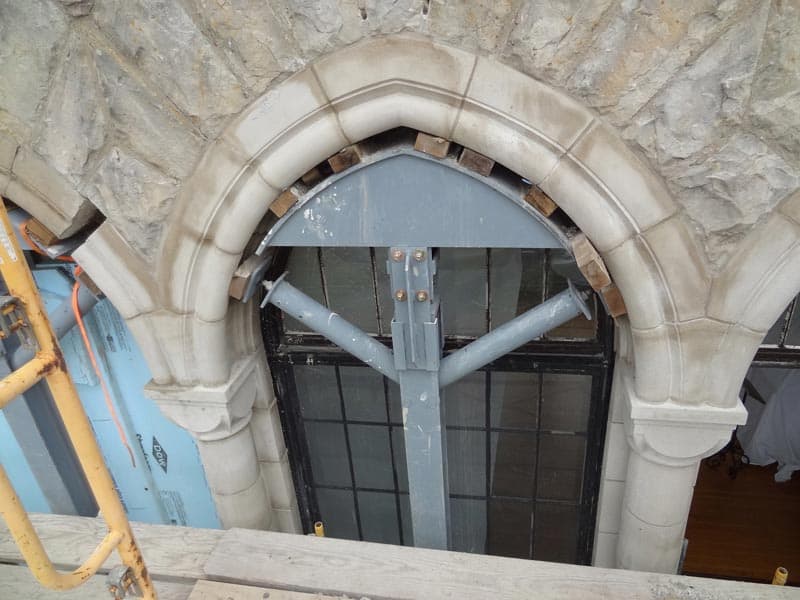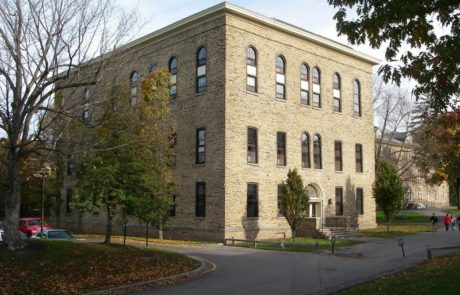Historic Buildings
Singer Castle Cast Stone Restoration
Singer Castle is an impressive granite bearing wall structure located on Dark Island in the St. Lawrence River in Upstate New York (St. Lawrence County). The 28-room castle was constructed in 1904 as a hunting retreat for the Frederic Bourne family. Frederic was the fifth CEO of the Singer Sewing Machine Company. The Scottish-inspired castle has been occupied continuously since its construction. A sun room and a master suite, added circa 1912, are supported on decorative pre-cast columns and arches.
The columns and arches supporting the addition were exhibiting a great deal of deterioration around the sun room. The cast stone was delaminating in sheets approximately two inches thick. These elements were suffering from extreme freeze-thaw damage due to the porosity of the cast stone. Since Singer Castle is open to the public, the owner wished to restore the facade in a manner matching the original design of the historic property. More importantly, the deterioration of these elements was threatening the structural integrity of the building.
A petrographic analysis was performed which described the cast stone as a “simple cement mortar mixed with a low water content that is crudely mixed and poorly consolidated.” This resulted in a cast stone that has a relatively high compressive strength but is extremely porous. This allows the cast stone to absorb large quantities of moisture. The cast stone does not contain air entrainment, which is typically used in exterior concrete to prevent freeze/thaw cracking and deterioration.
Based on the petrographic analysis, any patching of the cast stone would be in jeopardy of failure due to the continued freeze/thaw damage of the inner cast stone. It was not realistic to assume that any patching or method of waterproofing would eliminate moisture intrusion into the cast stone. Experience has shown that waterproof coatings eventually fail and accelerate deterioration by trapping the moisture that penetrates the material.
Thus the cast stone elements at Singer Castle had to be replaced. A high-quality, natural limestone, together with standard Type N mortar, were used. The means and methods for the removal and installation were up to the contractor. It was not an easy task due to the need to shore the structure above to allow removal and replacement of the arches. This was made more difficult because the peak of the arches were close to the second floor structure. The manpower, equipment, and materials had to be transported across the river to the work site. The concept of restoration was simple, but the approach proved to be more complex.
An ingenious method of shoring and supporting the masonry above the arch was developed by the contractor, working closely with Jay Saylor, P.E., of Herrick-Saylor Engineers in Pittsford, New York. A tree-like mechanism, with supporting branches, shored the adjacent pieces of the arches. Thus the vertical load was temporarily removed from those pieces and transferred to the support. This allowed the masons to remove and replace the damaged cast stone while protecting both the interior and the exterior of the building from damage.









